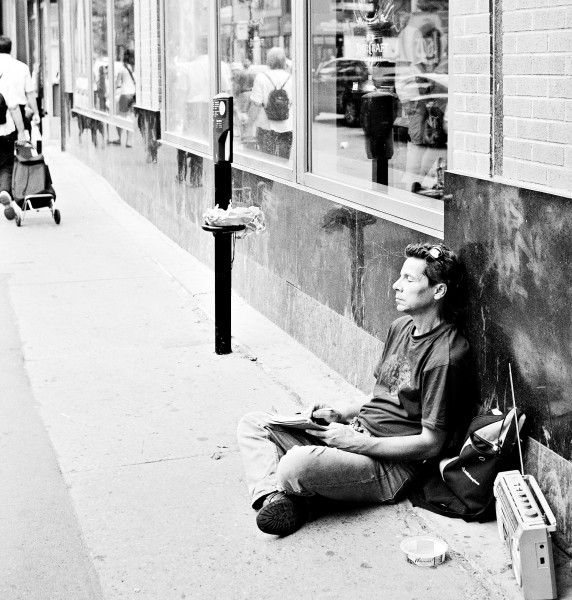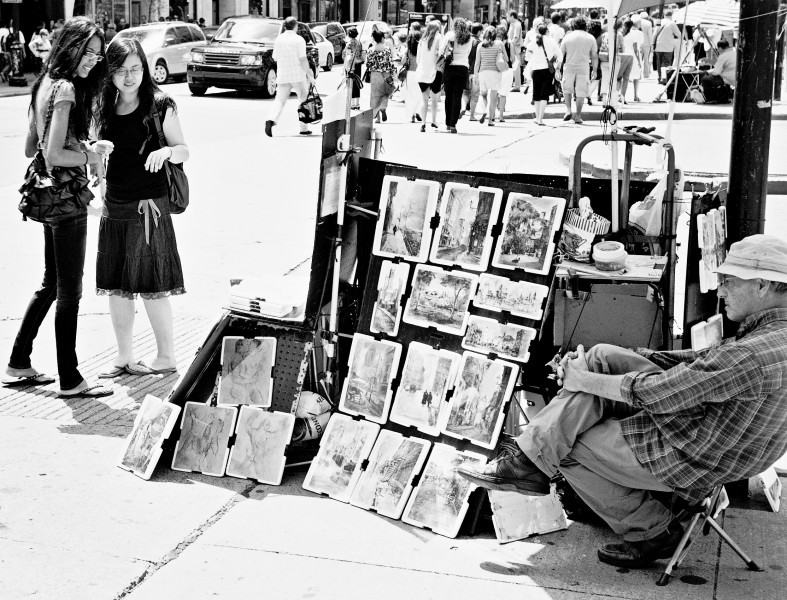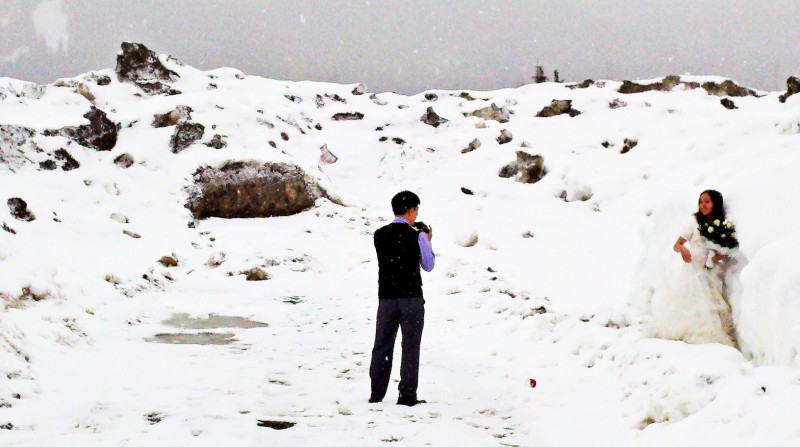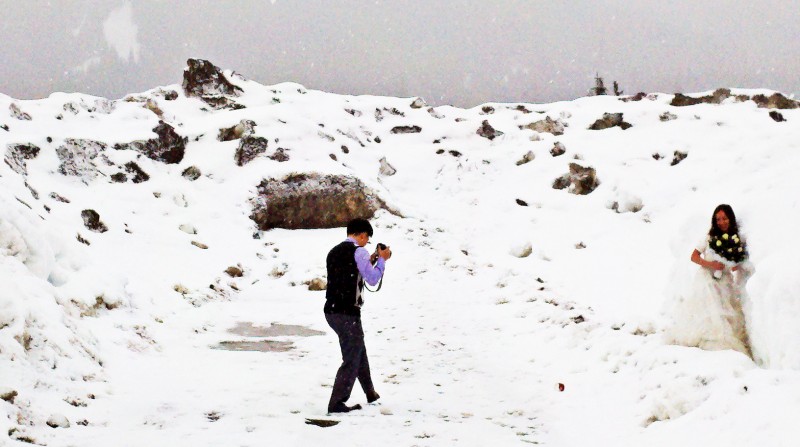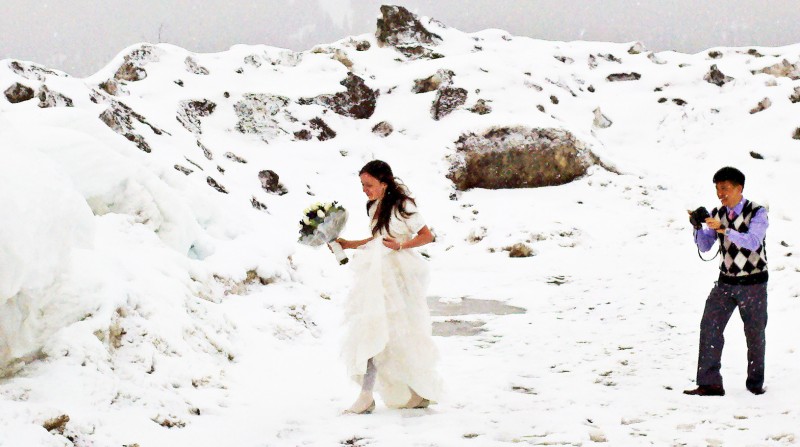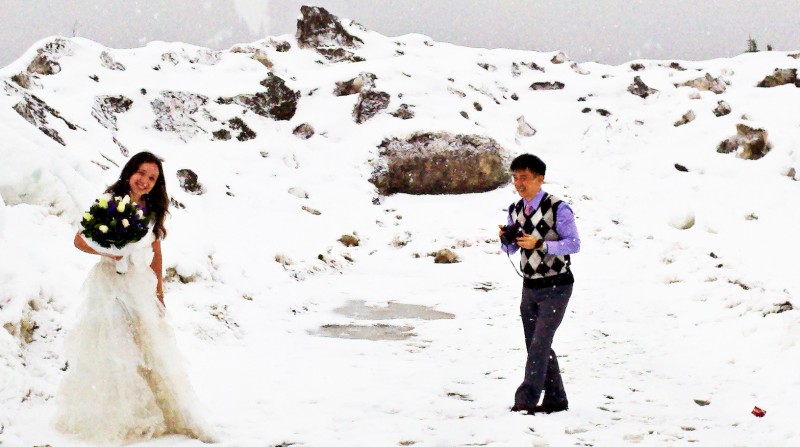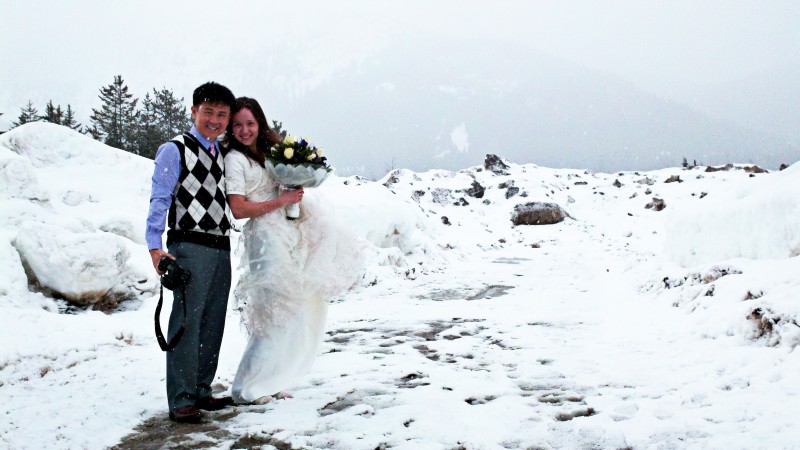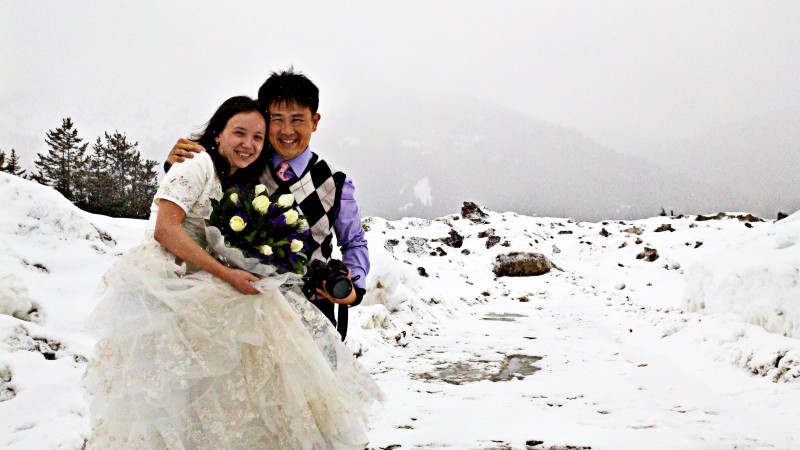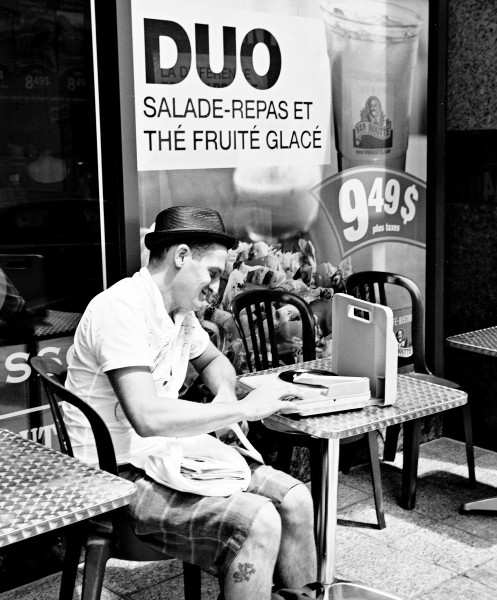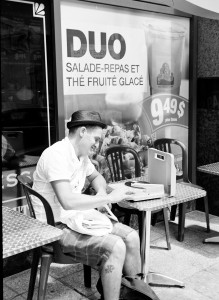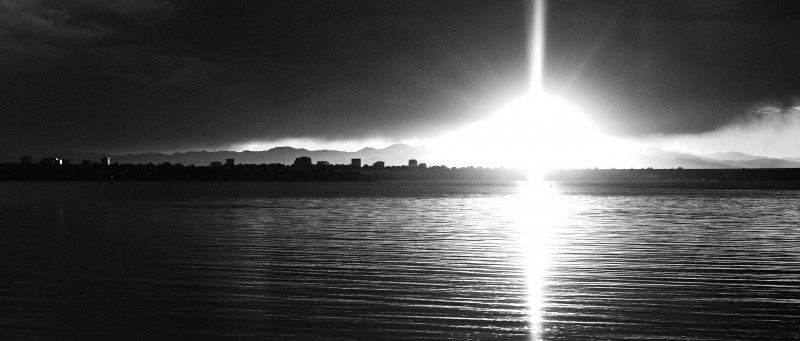
Sunset, Tsawwassen B.C.
Before abandoning a seemingly marginal image, allow yourself to play with it, exploring all options and seeking creative ways to make art out of apparently mediocre material. You may find yourself creating something unusual. Remember that only part of the art in photography comes before the shutter clicks!
I almost never try to do sunsets in black and white – after all, we admire them for their colors – and I cannot remember what possessed me to snap this image with black and white film in my camera. The original image (see below) had a line of uneven processing on the left side, and a large thumbprint in the middle of the picture! Yet the sunset and line of buildings was dramatic, and I played with it (without much hope) to see if anything could be rescued. Slicing off the left side and bottom removed the processing errors and thumbprint, and the resulting line of buildings and reflection began to look more hopeful. In fact, local contrast enhancement and minor changes in brightness and contrast produced a striking image. I explored the possibilities of enhancing the image in Curves. However, the density changes in this image strain the capabilities of both film and scanner; consequently, any significant tweaking in Curves caused the flow of image density to look less realistic, and I made only minor changes. In the end, the image carved out of this damaged piece of film stands largely on its own with only minor changes.
Taken on the Ensign 820 with the Ross Xpres lens on Ilford XP-2, aperture and shutter speed not recorded.
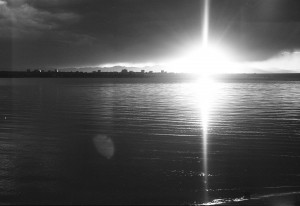
Sunset, Original Image
